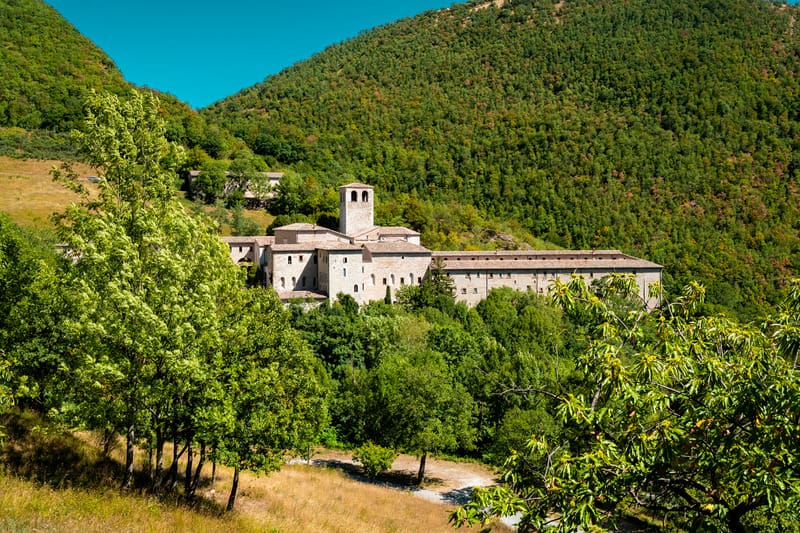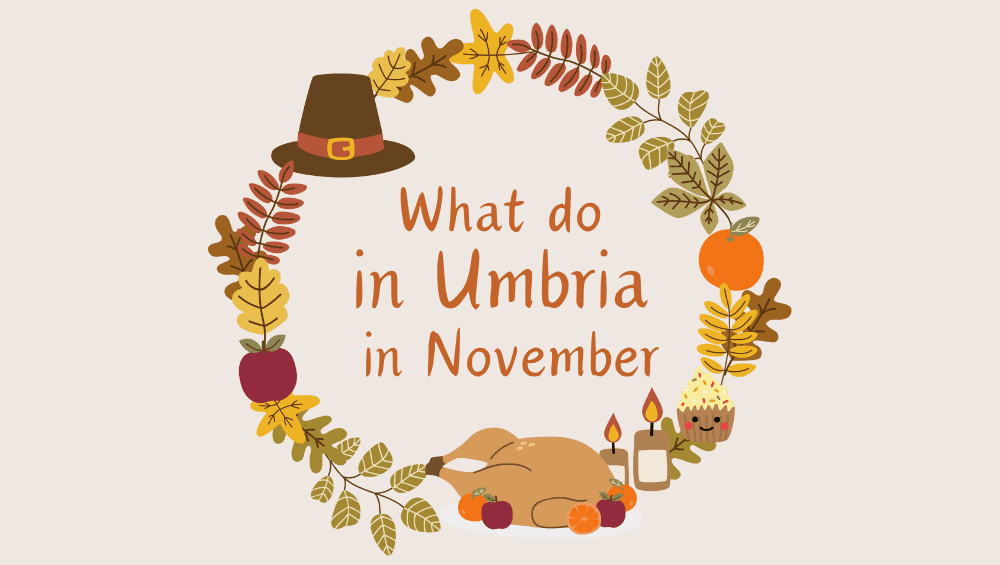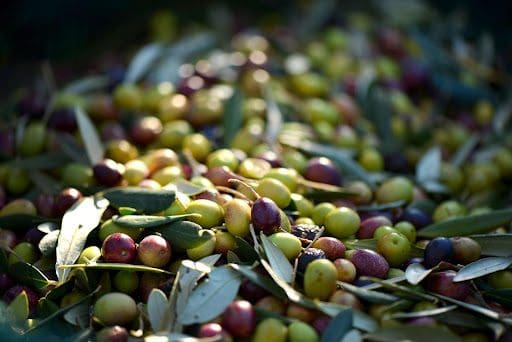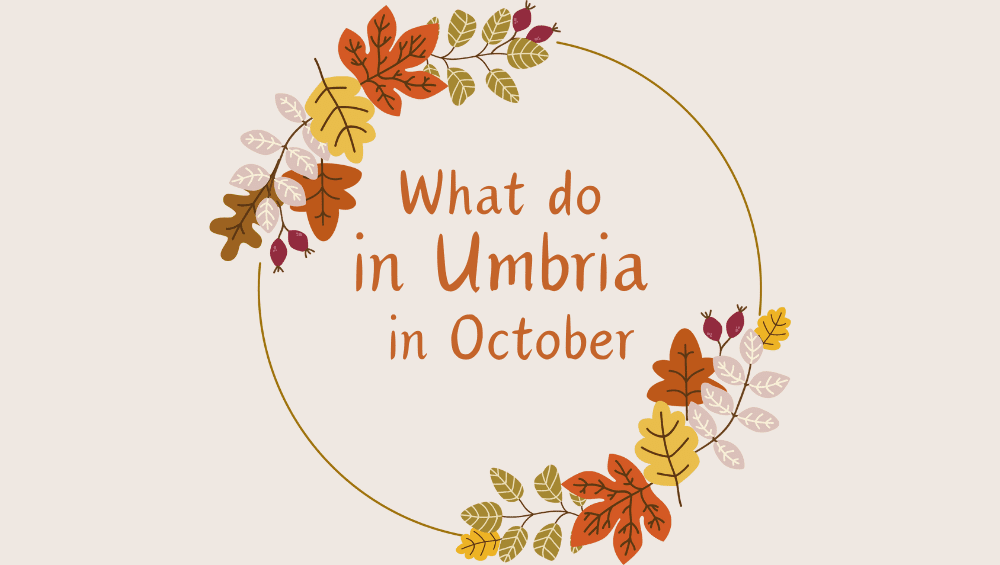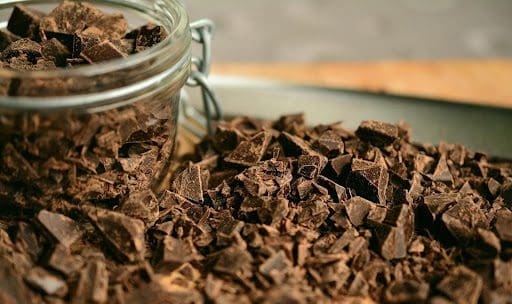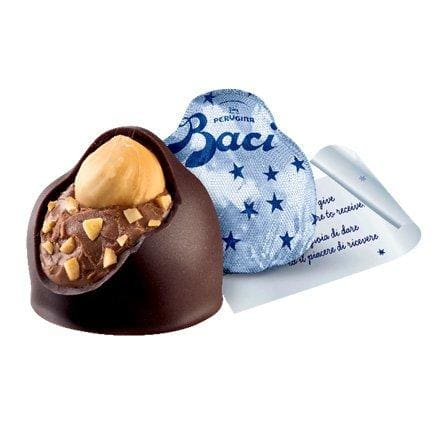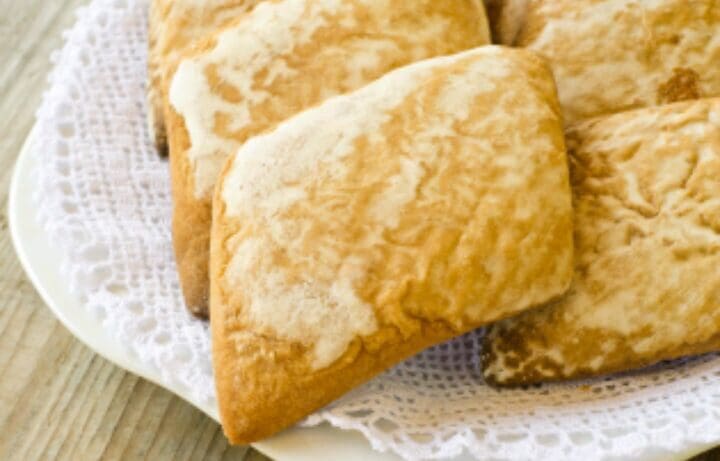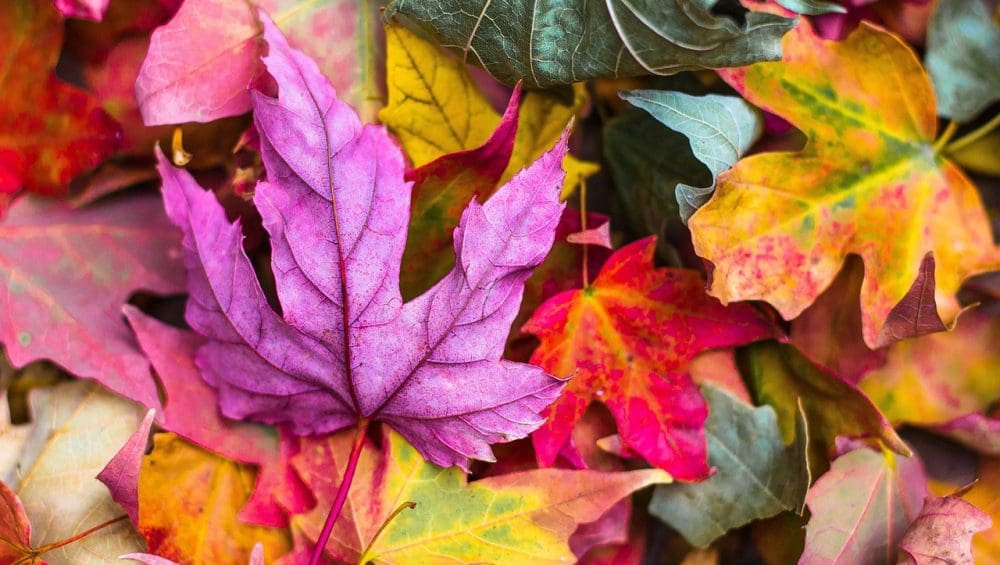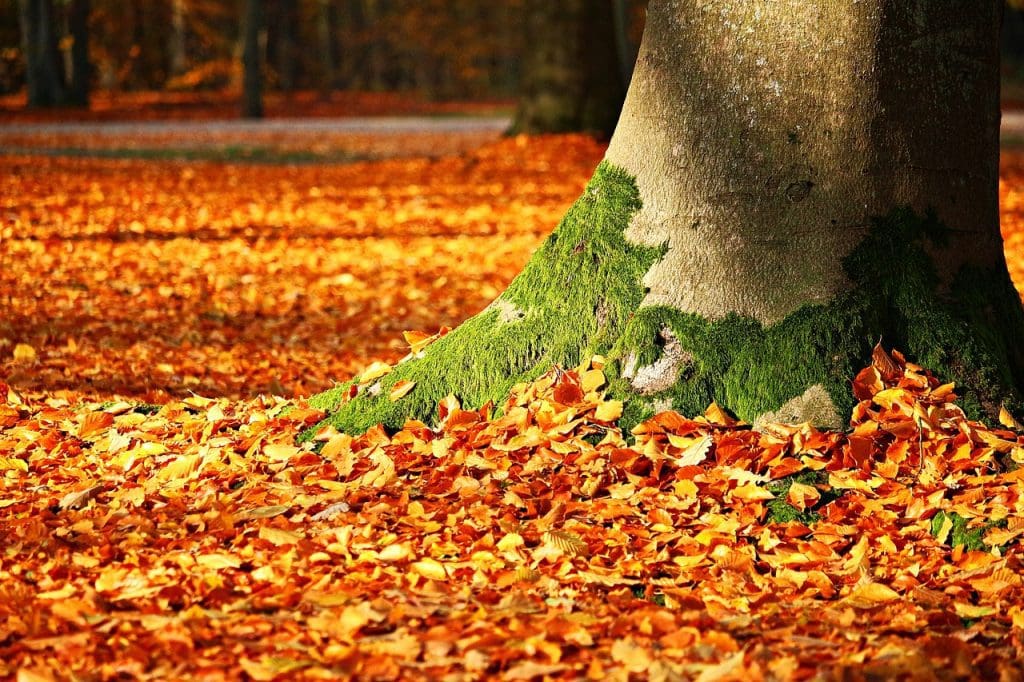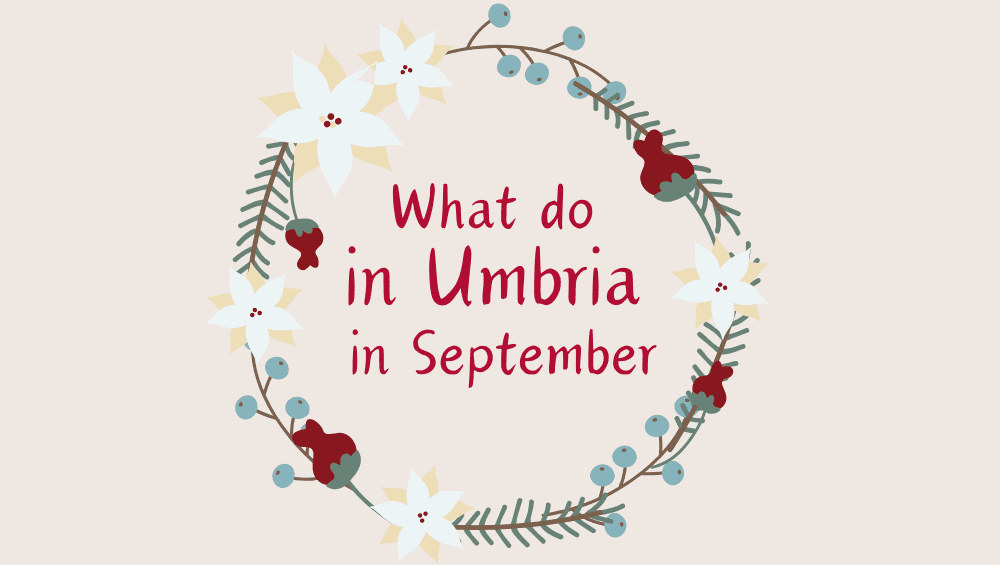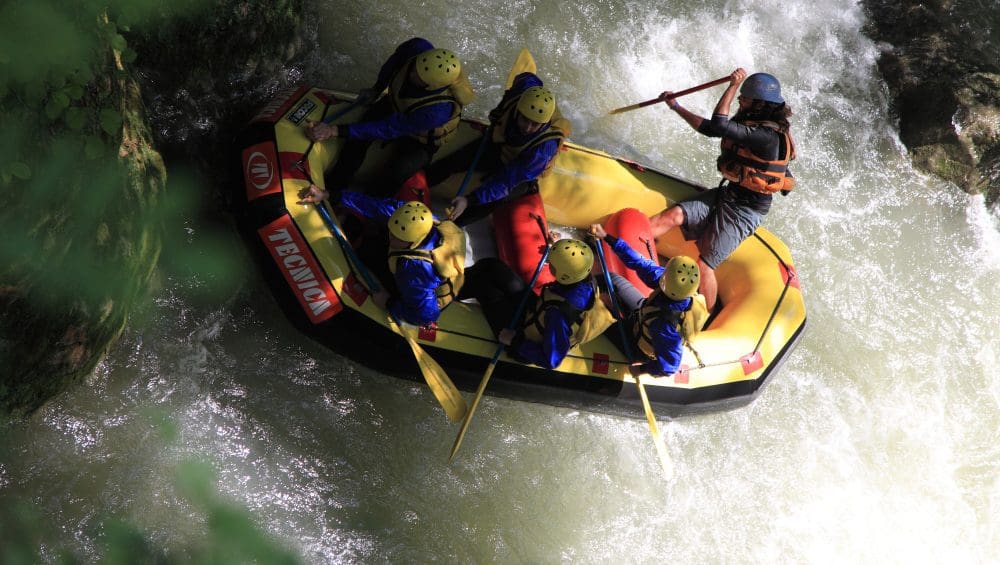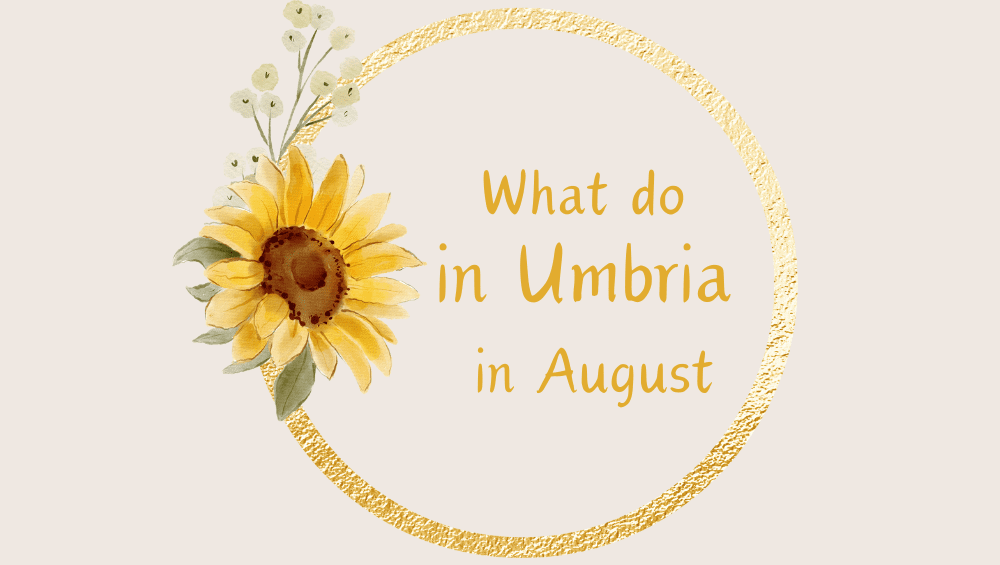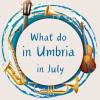Tour of the Abbeys between Umbria and Marche: an itinerary in the places of silence and prayer
Tour of the Abbeys between Umbria and Marche: an itinerary in the places of silence and prayer
This territory has always been a land in between, extremely important from a historical and cultural point of view because it is a crossroads of peoples and traditions, to bind – over time – the various cultures was religion, which, through churches, convents, abbeys, hermitages, has formed and influenced several generations.
Starting from the territory of the Marche, the first stop on our itinerary is the church of Sant’Ansovino di Avacelli which is located in the territory of ARCEVIA, along the road that leads to Serra San Quirico. Built around the 11th century, it is one of the churches that probably belonged to the Order of the Templars, around it there are many legends linked to the charm and the many secrets that the Knights hid, one of these speaks of an ancient treasure hidden right in the vicinity of the church. A curious story is told by a custodian who in the 17th century, while searching for this ancient wealth, split in half the processional cross with six spheres – symbol of the Knights Templar – located on the facade. Apparently, he found no gold but a terracotta pine cone.
The second stop on the tour takes you to the Abbey of San Vittore delle Chiuse, in the territory of GENGA, one of the most beautiful and important Romanesque buildings in the Marche. The church, built in the birthplace of San Benedetto, to whom it was originally dedicated, was constructed by the Lombards towards the end of the 20th century. Much of the charm of this large building is due to its splendid and scenic location, in the GOLA DI FRASASSI where the mountains create a sort of suggestive amphitheater. Sober and imposing, it has a structure in large white stone blocks, the lack of decorations – in perfect accordance with the artistic canons of the time and with the dictates of faith – gives the visitor an atmosphere of purity and essentiality. A mysterious detail has always attracted the attention of scholars and the curious who have wondered about the meaning of the symbol of the inverted Infinity that is found near the left door of the altar.
Another important example of the Marche Romanesque is represented by the nearby Abbey of Santa Croce in SASSOFERRATO, in the territory of Fabriano, which is located on a small hill surrounded by a fascinating impervious nature. Its construction is particular and fascinating, within the walls of an already existing church built in all probability by the Knights Templar of which various symbols are recognized carved on columns and capitals. The Templar mysteries are not the only ones to arouse curiosity, in fact on the upper floor you can see some symbols that recall the god Mytra, a pagan divinity to whom the ancient original temple was probably dedicated.
The destination of the fourth stage is the Abbey of Sant’Emiliano in CONGIUNTOLI, which, dedicated to the martyr of Numidia, Emiliano, is located on the junction – hence the name in Congiuntoli – of two waterways, the Esino and the Rio Freddo. Although it is located in the province of Perugia, the ancient construction in Romanesque-Gothic style is territorially part – historically and artistically – of this extraordinary border area of the Marca di Ancona. It is a monumental Benedictine abbey with a severe and imposing appearance that includes the monastery and the church and which most likely belonged to the Templar Order which, right on the Rio Freddo, had a historically confirmed headquarters. The loss of the monastery archive does not allow for precise dating or information, what is certain is that it was very important and owned several properties sold in 1860 when the royal commissioner of Umbria suppressed the monastery.
Before leaving the Marche and heading towards Umbria, we will stop at the majestic Monastery or hermitage of the Holy Cross of FONTE AVELLANA, near Serra Sant’Abbondio. Built on the slopes of Mount Catria around the year 1000 as a place of spiritual retreat for monks who wanted pure contact with God, immersing themselves in the silence of nature, it is still an oasis of peace where nature embraces and protects the structure and where many go to pray and meditate. The San Pier Damiani scriptorium is precious, the only one in the Marche that has never been restored and is therefore completely original, where the copyist monks studied and copied the ancient texts.
Returning to Umbria, near DI SCHEGGIA E PASCELUPO, there is the Abbey of Santa Maria di Sitria, located at the foot of Mount Nocria (867 meters), in the narrow valley of the Artino stream, inside the Monte Cucco Park. The hermitage was built by San Romualdo in 1014 while between 1018 and 1021 he founded the monastery there. The church of Sitria is composed of a single nave separated, in the Benedictine manner, from the presbytery by a stone staircase of 8 steps. It has Romanesque-Gothic lines, has a stone ogival vault roof and an altar embellished with three-lobed arches, supported by 13 small columns, most of which were stolen in the sixties and rebuilt. In the apse basin there is a fresco dating back to the 18th century, depicting the Crucifixion, by an unknown artist. The crypt below, which is accessed through an entrance in the center of the staircase, is very elegant and has a vault supported by a granite column with a capital, almost certainly from a Roman building. In the basement of the church, the so-called prison of San Romualdo is indicated, the narrow cell in which the Saint was locked up for six months by his monks.
The last stop on our itinerary that ends in Umbria, is near UMBERTIDE, the Abbey of Montecorona is an imposing Benedictine complex founded in the 12th century. Immersed in a thick forest, the abbey is famous for its Romanesque crypt, an evocative and mysterious environment. The visit offers the opportunity to immerse yourself in medieval history and appreciate sacred art in a natural context of rare beauty.


